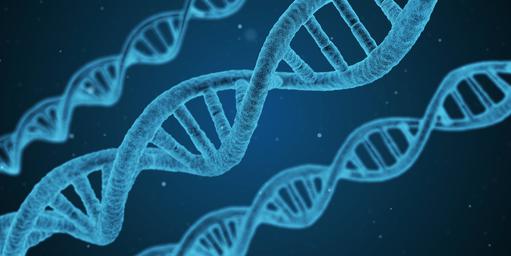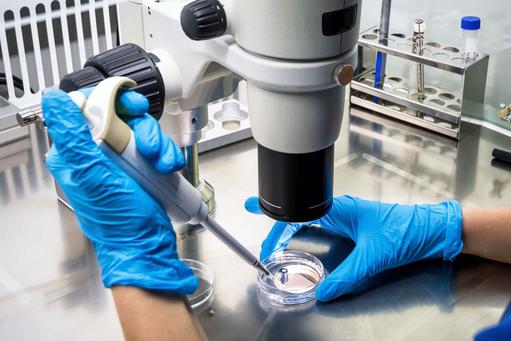- Healthcare systems throughout the world are in constant crisis
- Attempts to introduce digital infrastructure to improve the quality of care, efficiency, and patient outcomes have failed
- Modern healthcare systems were built on the idea that doctors provide healthcare with meaning and power, but this is changing
- Advances in genetics and molecular science are rapidly eating away at doctors’ discretion and power
- People are loosing their free will and increasingly being driven by big data strategies
- An important new book suggests that a biotech-savvy elite will edit people's genomes and control health and healthcare with powerful algorithms, and that people will merge with computers
- Homo sapiens will evolve into Homo Deus
Future healthcare shock
This book should be compulsory reading for everyone interested in health and healthcare, especially those grappling with strategic challenges. Homo Deus: A brief history of tomorrow, by Yuval Harari, a world bestselling author, published in 2016 is not for tacticians responding to their in-trays, but for healthcare strategists planning for the future.
The book is published a year after an OECD report concluded that NHS England is one of the worst healthcare systems in the developed world; hospitals are so short-staffed and under-equipped that people are dying needlessly. The quality of care across key health areas is “poor to mediocre”, obesity levels are “dire”, and the NHS struggles to get even the “basics” right. The UK came 21st out of 23 countries on cervical cancer survival, 20th on breast and bowel cancer survival and 19th on stroke.
Harari pulls together history, philosophy, theology, computer science and biology to produce an important and thought provoking thesis, which has significant implications for the future of health and healthcare. Homo Deus, more than the 2015 OECD Report, will make you think.
Healthcare’s legacy systems an obstacle for change
While a large and growing universe of consumers regularly use smartphones, cloud computing, and global connectivity to provide them with efficient, high quality, 24-hour banking, education, entertainment, shopping, and dating, healthcare systems have failed to introduce digital support strategies to enhance the quality of care, increase efficiency, and improve patient outcomes.
Why?
The answer is partly due to entrenched legacy systems, and partly because digital support infrastructure is typically beyond the core mission of most healthcare systems. Devi Shetty, cardiac surgeon, founder and CEO of Narayana Health, and philanthropist, laments how digital technologies have, “penetrated every industry in the world except healthcare”, and suggests doctors and the medical community are the biggest obstaclesto change.
Doctors’ traditional raison d'être is being replaced by algorithms
Notwithstanding, modern medicine has conquered killer infectious diseases, and has successfully transformed them, “from an incomprehensible force of nature into a manageable challenge . . . For the first time in history, more people die today from old age than from infectious diseases,” says Harari.
Further, modern healthcare systems were built on the assumption that individual doctors provided healthcare systems with meaning and power. Doctors are free to use their superior knowledge and experience to diagnose and treat patients; their decisions can mean life or death. This endowed doctors and healthcare systems with their monopoly of power and their raison d'être. But such power and influence is receding, and rapidly being replaced by biotechnology and algorithms.
Healthcare systems in crisis
This radical change adds to the crisis of healthcare systems, which lack cash, and have a shrinking pool of doctors treating a large and growing number of patients, an increasing proportion of whom are presenting with complicated co-morbidities. Aging equipment in healthcare systems is neither being replaced nor updated, and additionally, there is a dearth of digital infrastructure to support patient care.
A symptom of this crisis is the large and increasing rates of misdiagnosis: 15% of all medical cases in developed countries are misdiagnosed, and according to The Journal of Clinical Oncology, a staggering 44% of some types of cancers are misdiagnosed, resulting in millions of people suffering unnecessarily, thousands dying needlessly, and billions of dollars being wasted. Doing more of the same will not dent this crisis.
Computers replacing doctors
As the demand for healthcare increases, healthcare costs escalate, and the supply of doctor’s decrease, so big data strategies and complex algorithms, which in seconds are capable of analysing and transforming terabytes of electronic healthcare data into clinically relevant medical opinions, are being introduced.
Such digital infrastructure erodes the status of doctors who no longer are expected solely to rely on their individual knowledge and experience to diagnose and treat patients. Today, doctors have access to powerful cognitive computing systems that understand, reason, learn, and do more than we ever thought possible. Such computers provide doctors almost instantaneous clinical recommendations deduced from the collective knowledge gathered from thousands of healthcare systems, billions of patient records, and millions of treatments other doctors have prescribed to people presenting similar symptoms and disease states. Unlike doctors, these computers never wear out, and can work 24-7, 365 days a year.
The train has left the station
One example is IBM’s Watson, which is able to read 40 million medical documents in 15 seconds, understand complex medical questions, and identify and present evidence based solutions and treatment options. Despite the resistance of doctors and the medical establishment the substitution of biotechnology and algorithms for doctors is occurring in healthcare systems throughout the world, and cannot be stopped. “The train is again pulling out of the station . . . . Those who miss it will never get a second chance”. For healthcare systems to survive and prosper in the 21st century is to understand and embrace “the powers of biotechnology and algorithms”. People and organizations that fail to do this will not survive, says Harari.
The impact of evolutionary science on healthcare systems
Roger Kornberg, Professor of Medicine at Stanford University who won the 2006 Nobel Prize in chemistry, "for his studies of the molecular basis of eukaryotic transcription", describes how human genome sequencing and genomics have fundamentally changed the way healthcare is organized and delivered. “Genomic sequencing enables us to identify every component of the body responsible for all life processes. In particular, it enables the identification of components, which are either defective or whose activity we may wish to edit in order to improve a medical condition,” says Kornberg.
The new world of ‘dataism’
Harari’s “new world” describes some of the implications of Kornberg’s discoveries, and suggests that evolutionary science is rapidly eroding doctors’ discretion and freewill, which are the foundation stones of modern healthcare systems and central to a doctors’ modus vivendi. Because evolutionary science has been programmed by millennia of development, our actions tend to be either predetermined or random. This results in the uncoupling of intelligence from consciousness and the “new world” as data-driven transformation, which Harari suggests is just beginning, and there is little chance of stopping it.
Over the past 50 years scientific successes have built complex networks that increasingly treat human beings as units of information, rather than individuals with free will. We have built big-data processing networks, which know our feelings better than we know them ourselves. Evolutionary science teaches us that, in one sense, we do not have the degree of free will we once thought. In fact, we are better understood as data-processing machines: algorithms. By manipulating data, scientists such as Kornberg, have demonstrated that we can exercise mastery over creation and destruction. The challenge is that other algorithms we have built and embedded in big data networks owned by organizations can manipulate data far more efficiently than we can as individuals. This is what Harari means by the “uncoupling” of intelligence and consciousness.
We are giving away our most valuable assets for nothing
Harari is not a technological determinist: he describes possibilities rather than make predictions. His thesis suggests that because of the dearth of leadership in the modern world, and the fact that our individual free-will is being replaced by data processors, we become dough for the Silicon Valley “Gods” to shape.
Just as African chiefs in the 19th Century gave away vast swathes of valuable land, rich in minerals, to imperialist businessmen such as Cecil Rhodes, for a handful of beads; so today, we are giving away our most valuable possessions - vast amounts of personal data - to the new “Gods” of Silicon Valley: Amazon, Facebook, and Google for free. Amazon uses these data to tell us what books we like, and Facebook and Google use them to tell us which partner is best suited for us. Increasingly, big-data and powerful computers, rather than the individual opinion of doctors, drive the most important decisions we take about our health and wellbeing. Healthcare systems will cede jobs and decisions to machines and algorithms, says Harari.
Takeaways
For the time being, because of the entrenched legacy systems, health providers will continue to pay homage to our individuality and unique needs. However, in order to treat people effectively healthcare systems will need to “break us up into biochemical subsystems”, and permanently monitor each subgroup with powerful algorithms. Healthcare systems that do not understand and embrace this new world will perish. Only a relatively few early adopters will reap the rewards of the new technologies. The new elite will commandeer evolution with ‘intelligent’ design, edit peoples’ genomes, and eventually merge individuals with machines. Thus, according to Harari, a new elite caste of Homo sapiens will evolve into Homo Deus. In this brave new world, only the new “Gods”, with access to the ultimate source of health and wellbeing will survive, while the rest of mankind will be left behind.
Harari does not believe this new health world is inevitable, but implies that, in the absence of effective leadership, it is most likely to happen.
|













